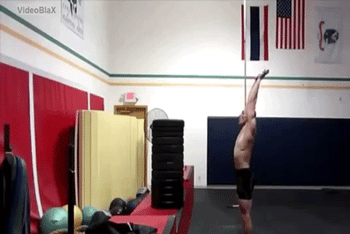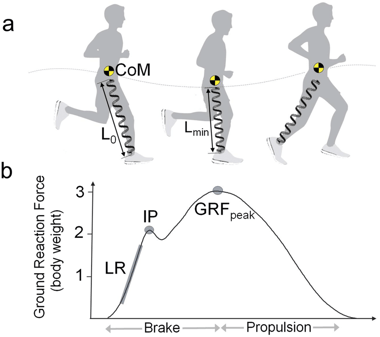Force Absorption and Production: The Key to Runner's Knee Physical Therapy
August 31, 2023
When solving issues like Runner's Knee (patellar tendinitis), most therapy clinics approach the issue simply...and incorrectly.
❌ Your knee is inflamed - so you should rest it
❌ Your quads are tight - so you should stretch them
❌ Your hips are weak - so you should do mini-band monster walks
❌ You're quad-dominant - so you should strengthen your posterior chain
Heard this nonsense before??? It's unfortunate that while in a vacuum some of these thoughts might seem sensible, none of them address the body as a system, or address preparedness for activity. To frame thinking from another perspective - I want to introduce an important athletic concept: Rate of Force Development.
WHAT IS RATE OF FORCE DEVELOPMENT??
Rate of Force Development is a statistical metric that informs an athlete's capabilities in explosive strength. An example: a display of absolute strength vs. rate of force development can be seen in the World's Strongest Man competitors. Deadlifting a car over a slow and painful grind is a tremendous display of absolute strength. By contrast, a high rate of force development could be observed in the keg toss; an activity where that same athlete has to get the object moving as quickly as possible to propel it across the air.

Rate of force development is important when it comes to producing force at a rapid rate; in particular ballistic activities or speed/power. An athlete with high RFD likely demonstrates an impressive amount of peak power, high neural drive as required for the exercise, and high muscle-tendon stiffness to create a springing effect. See the GIF above for a demonstration of an impressive athlete producing force EXTREMELY rapidly.
Digging even deeper: it may be informative to see how rapidly an athlete produces force in specific time intervals from initiation. According to research from Buckthorpe et. al in the UK 2017 athletes who had previously suffered a hamstring strain had limited RFD of 40-50% when compared to the "healthy" limb at 50-100 milliseconds. The same authors suggested that you are able to train for this capability -- athletes who trained at high intensity for RFD and power development saw 78% increase in their RFD.
HOW DOES IT RELATE TO KNEE DISCOMFORT IN RUNNING?

When it comes to the lower extremities, running is a repeated cycle of propulsion from one leg into absorption on the next. The faster you move, the more force you are creating, and thus the greater forces you must absorb on the next step. A potentially overlooked aspect of Runner's Knee (patellar tendinitis) is the incapability to absorb force as you contact the ground. An athlete striking the ground at 3x bodyweight forces needs a commensurate ability to absorb impact forces in the landing leg. If the leg, or the knee and quads specifically, cannot accommodate that load an athlete may put excess stress on tendons and connective tissue, causing inflammation -- Runner's Knee.
Landing on a single-leg, you'll need to produce forces that exceed the landing impact, and maintain your speed...but do it all within a limited time that you are in contact with the ground. Failure to succeed at this leads to reduced running economy, excess energy expenditure, and likely some pain via exceeding the stress tolerance of your knees.
CAN I WORK ON THIS WHILE I HAVE KNEE PAIN?
Obviously! We're advocates for finding the capacity for loading that you are currently capable of. Full rest is rarely the solution here. It's important to approach this by thinking of tolerance. You'll need to meet yourself at your current capabilities in order to have a training effect and tissue adaptation without increasing pain and inflammation.
Even if you are in some discomfort, you should be able to find appropriate intensity and volume to work on some of the following drills:
- Control the braking forces of landing on one leg, and practice propulsion - in pain-free or low-pain volumes and amplitude
- Stimulate connective tissue stiffness in muscles and tendons. Regressed positions to manage pain - keep contact times <200ms ideally for running.
- Practice overall force production of the quads with high effort isometrics - in positions related to running
A consultation with a MOTIVNY therapist is a great way to have a conversation with a DPT who is experienced in advising you on what level of plyometrics, isometrics, and explosive training is appropriate for you.

LUKE GREENBERG
Manual Medicine, Kettlebells and Golf Training, Team Dad